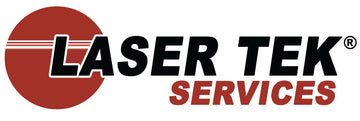In photo printing particularly inkjet bleeding is as common as eating breakfast. There are lots of tangibles that may cause ink to bleed on paper, not even a photosmart 5520 ink user is freed of this concern.
Ink bleed applies to both monochrome (black and white) and color printing. When black ink bleeds it affects the clarity and quality of the texts. In color, when pigment bleeds into the adjoining color reduces substantially print quality. However, not all color bleeds are nuisance to print quality, because some are done on purpose to attain a degree of effect on the finished document.
Bleeding is confined to inkjet printing because the technology uses ink to print. A typical inkjet printer for instance delivers about 5,000 dots per second (dps) through its minute jet nozzles. Looking at it is a blur visually as the printhead moves at mind boggling speed. Everything along the inks path must compensate and retentive to the printing speed. Anything less will result in disaster and photo quality suffers.
There are two major source of concerns that affect photo print quality. One is the quality of paper and the other is the type of ink being used:
- Paper, substrate or media used – is a critical factor being the surface that receives the ink dots delivered by the printer. Papers characteristics on ink absorption and capillary action determines the quality output. Paper must have the properties to absorb ink immediately as it strikes the surface and before it dries to prevent bleeding.
- Ink type, there are two major classes of ink used in inkjet printing. Most popular is the water-based or aqueous ink used in more types of inkjet printers. The HP photosmart 5520 ink is part of this class. The reason could be it is eco-friendlier, but is more prone to bleed on non-compatible paper. The other type is solvent based, used in most Brother and Epson inkjet printers. The carrier liquid being solvent makes it environmentally damaging. However, solvent dries quickly and is never found to cause bleeding in printouts.
Even with the right choice of paper and compatible ink type is addressed, ink bleeding could still manifest. When met with this predicament, printer settings should be the right remedy. Be aware that printers delivers out different amounts of ink and prints at different speeds. In the current setting a lot of ink may have been used on a different type of paper that overloads the process. Match the ink setting to the type of paper to avoid bleeding, or reducing ink supply to the print head results in prints that looks washed out.
Remember, even with a HP Photosmart 5520 ink in the printer, it does not guarantee the desired photo printout if the type of paper and ink is not addressed.





